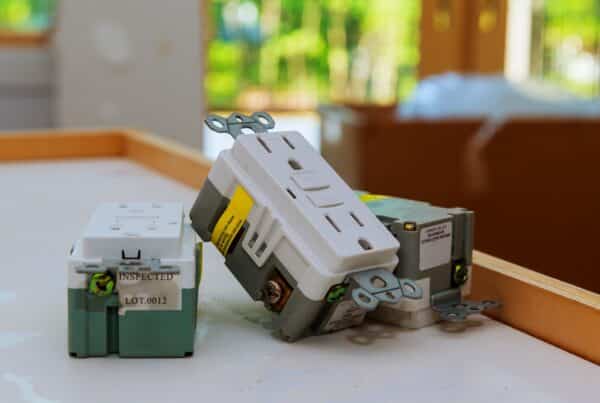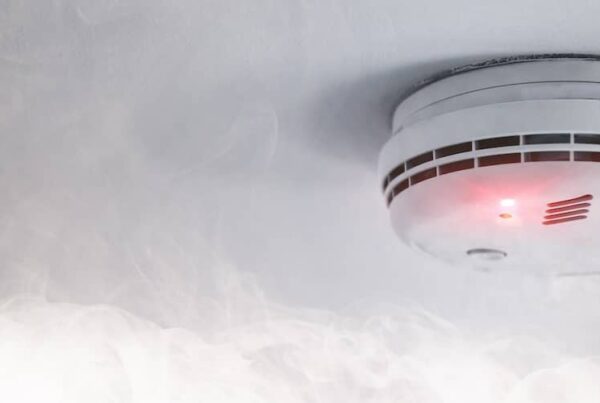
A 3-way switch is found in places like staircases and long hallways. Essentially, they let you control a single light from two different locations. While convenient, their wiring can be confusing for many homeowners—that’s why this post breaks down 3-way switches simply, even if you don’t know the first thing about them yet.
Whether you’re troubleshooting a flickering light or just curious, you’ll find clear answers and practical tips for how to identify them and what to do if problems arise.
What is 3-Way Switch Wiring?
This feature is commonly used in areas where multiple switches make life more convenient, like staircases, hallways, or large rooms with multiple entry points.
At its core, 3-way switch wiring works by creating a path for electricity to flow between the two switches and the light fixture. Unlike a standard single-pole switch, which has just two terminals (on and off), a 3-way switch includes three main components—a common terminal, traveler terminals, and a ground screw.
When you flip one of the switches, it changes the path of the current, either completing or interrupting the circuit to turn the light on or off. The second switch works in sync with the first, so you can control the light no matter which switch you use.
For example, you might turn a hallway light on at the bottom of the stairs and turn it off at the top.

Components of a 3-Way Switch
The functionality of a 3-way switch relies on its well-coordinated parts, each playing a specific role in controlling a single light from two locations:
- Common terminal: This connection point handles the power input or directs current to the light fixture, depending on the switch’s location in the circuit. A darker screw often marks the terminal, making it easy to identify.
- Traveler terminals: Two terminals connect the switches, carrying electrical current along traveler wires. These pathways allow the switches to “talk” to each other and control the light seamlessly.
- Ground wire: The ground wire ensures safety, directing excess current away from the system to prevent shocks or damage. It attaches to a green screw on the switch.
- Switch casing: This external housing protects the internal mechanism and provides stability for installation into the wall.
Each component helps create a system that allows either switch to control the light. Homeowners dealing with loose connections or malfunctioning switches can focus on these key elements to identify potential issues and decide whether professional assistance is needed.
Common Issues with 3-Way Switch Wiring
These issues can often be resolved with basic troubleshooting, but persistent problems or signs of damage should always be handled by a professional to ensure your home’s safety.
Here are some of the most common issues with 3-way switch wiring and how to address them:
1) Light doesn’t turn on or off from one switch
This issue is often caused by a loose connection, a broken wire, or a misaligned traveler wire. Double-check the wiring at each switch to ensure all terminals are securely connected.
If the wiring seems intact, the switch itself may be faulty and require replacement.
2) Light flickers when using the switches
Flickering lights can signal loose connections, worn wires, or even a faulty bulb. Start by inspecting the light fixture and bulb to rule out simple causes.
If the flickering persists, it’s likely due to an unstable connection within one of the switches or the traveler wires.
3) Light stays on or off regardless of switch position
This problem typically occurs when the traveler wires are miswired or when one of the switches is stuck in a non-functional position.
Examining the wiring for correct placement and ensuring the internal mechanism of each switch moves freely can resolve this issue.
4) Sparking or buzzing noises at the switch
Hearing sparking or buzzing is a sign of worn-out or damaged components. This can indicate a fire hazard and should be addressed immediately.
Turn off the power to the circuit and consult a licensed electrician for repairs.
How to Avoid Recurring Issues
- Always turn off the power before working on switches to ensure safety.
- Use proper tools, such as a voltage tester, to check for live wires before handling them.
- Label wires during replacement or installation to prevent confusion.

Other Recommended Maintenance
Keeping your home’s electrical system in good shape starts with you. Routine maintenance ensures safety and helps prevent larger, more expensive problems down the line.
Here are a few tips:
- Test all light switches periodically to catch loose connections or other problems early.
- Inspect light fixtures for signs of wear, such as flickering or dimming bulbs, which could indicate electrical issues.
- Check outlets and switches for warmth or discoloration, which may signal overheating or faulty wiring.
- Replace older switches with modern, safer alternatives if they show signs of wear or malfunction.
Regular attention to these small details can save you from larger repairs and help your home’s electrical system run smoothly.
When to Call a Professional
While some issues with 3-way switches can be solved with simple troubleshooting, it’s important to know when professional help is the safest option. Call an expert about:
- Persistent flickering or failure to control the light properly, even after checking the wiring.
- Buzzing, sparking, or overheating at the switch, as these could indicate a serious hazard.
- Wiring that looks damaged, frayed, or improperly installed.
- Any situation where you feel uncertain or unsafe working on the electrical system.
Conclusion
3-way switches add convenience and functionality to your home, but understanding their wiring and components is key to keeping them in good working order. Whether you’re dealing with a flickering light, a switch that won’t work, or signs of wear, this guide provides the clarity and confidence to address common problems.
For any concerns that feel beyond your expertise, trust the professionals at All Coast Home Inspections. Our experienced team ensures your home’s electrical system is safe, reliable, and up to code. Schedule your inspection today to enjoy peace of mind and a well-functioning home.



